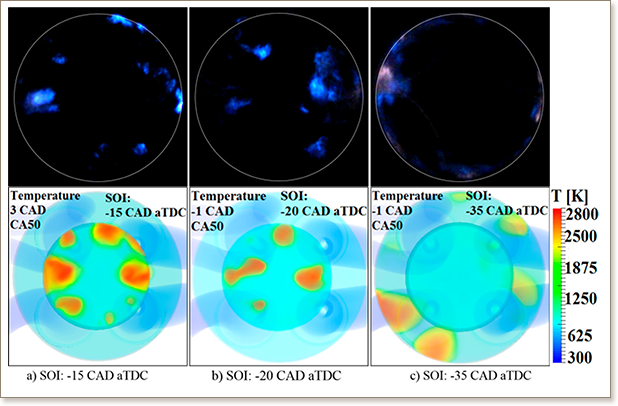


The present study intends to explore the in-cylinder combustion and evolution of soot emission during the transition from conventional compression ignition (CI) combustion to partially premixed combustion (PPC) under low load conditions. In-cylinder combustion images and engine-out emissions were measured in an optical engine fueled with low octane heavy naphtha fuel (RON = 50). Full cycle engine simulations were performed using a three-dimensional computational fluid dynamics code CONVERGE, coupled with gas-phase chemical kinetics, turbulence, and a particulate size mimic soot model. The simulations were performed under low load conditions (indicated mean effective pressure (IMEP) of ∼2–3 bar) at an engine speed of 1200 rpm. The start of injection (SOI) was advanced from late (−10 CAD aTDC) to early fuel injection timings (−40 CAD aTDC) to realize the combustion transition from CI combustion to PPC. The simulation results of combustion and emission are compared with the experimental results in both CI and PPC combustion modes. The results of the study show a typical low-temperature stratified lean combustion in PPC mode, while high-temperature spray-driven combustion is evident in CI mode. The in-cylinder small intermediates species such as acetylene (C2H2), propargyl (C3H3), cyclopentadienyl (C5H5), and polycyclic aromatic hydrocarbons (PAHs) were significantly suppressed at PPC mode. Nucleation reaction of PAHs collision contributed to main soot mass production. The distribution of soot mass and particle number density was consistent with the distribution of high-temperature zones in CI and PPC combustion modes.